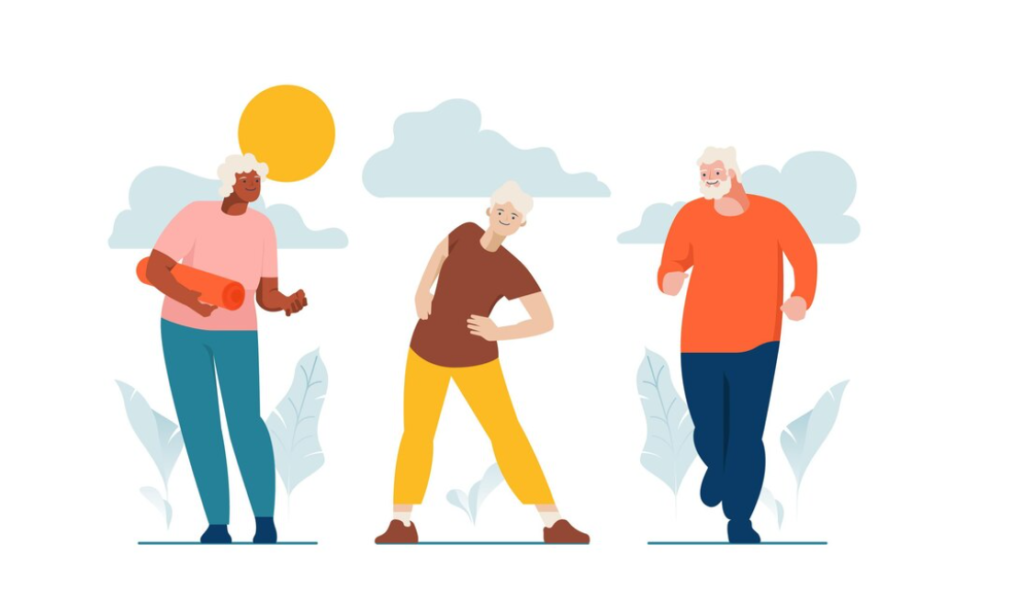Although precise life spans are elusive due to life’s unpredictability, we can provide a rough estimate by analyzing key statistical trends. These trends include the steady rise in human life expectancy, the commonly observed longer lifespan among women compared to men, and the ongoing decrease in mortality rates across various age brackets. Nonetheless, fluctuating death rates, such as the spike witnessed in 2022, suggest that these patterns may not remain constant indefinitely.
Utilizing the Longevity Prediction Tool
The longevity prediction tool is designed to provide an estimate of your lifespan. Let’s illustrate how it works with an example.
Consider a 61-year-old woman born in 1962. According to high mortality rate trends, she can expect to live until about age 87. With medium mortality rates, age 88, and given a low mortality rate scenario, she might be celebrating her 89th birthday.
The tool also provides a dynamic perspective by calculating possible lifespan at different stages of your life. For instance, a woman who was born in 1962 and reaches the age of 65 can expect to live until around 88 years based on high death rates, 89 years considering medium death rates, and up to 90 years considering low death rates.
Understanding the Variables
The estimates the tool provides are derived from actual mortality rates of the global population since 1876. As expected, younger people face more uncertainty due to the larger percentage of their expected life span remaining.
It’s important to note that the calculated life expectancy represents an average lifespan, not a guaranteed one. Certain unpredictable events such as accidents, pandemics, or wars can influence an individual’s life span, as can lifestyle factors like smoking, diet, and environmental circumstances. Life expectancy can also vary based on ethnicity and socioeconomic status.
Defining Terms and Clarifying Assumptions

Life expectancy refers to the average remaining lifespan at a given age. The given lifespan in the tables stems from the birth year to the estimated year of death. The underlying basis of our calculator is the cohort life tables that detail the mortality rates experienced by people at each age, born in each year since 1876.
Of course, future prediction is an imperfect science; hence, the calculator makes certain assumptions about future mortality rates at each age, based on both local and global trends. The calculator’s medium, low, and high death rates correspond to the 50th, 95th, and 5th percentile of the cohort life expectancy assumptions respectively.
The medium death rates serve as a baseline for assessing future trends. However, due to the inherent uncertainty of the future, life expectancies are also calculated based on lower and higher death rates. This range of rates provides a comprehensive picture of potential life expectancy.
Factors Affecting Life Expectancy
Life expectancy is influenced by a myriad of factors, encompassing genetic, environmental, and lifestyle elements.
- Genetic predispositions can play a significant role, as some individuals are inherently more susceptible to certain diseases than others;
- Environmental factors, including access to clean water, air quality, and exposure to pollutants, significantly impact health and longevity;
- Socioeconomic status is another critical determinant; individuals with higher socioeconomic status often have better access to healthcare, nutritious foods, and safer living conditions, which can lead to longer life spans;
- Lifestyle choices are paramount; habits such as smoking, excessive alcohol consumption, lack of physical activity, and poor diet can drastically reduce life expectancy;
- Conversely, maintaining a healthy weight, engaging in regular exercise, eating a balanced diet, and avoiding harmful substances can significantly extend one’s life;
- Healthcare access and quality also play crucial roles; regions with advanced healthcare systems and widespread access to preventive care and treatments tend to have higher life expectancies;
- Lastly, social connections and mental health are increasingly recognized for their impact on longevity, with strong social ties and positive mental health being associated with reduced mortality risk.
Tips for Enhancing Longevity

Enhancing longevity involves adopting a comprehensive approach that encompasses physical, mental, and emotional health.
- Regular physical activity is paramount; aim for at least 30 minutes of moderate exercise most days of the week to boost cardiovascular health, strengthen muscles, and enhance flexibility;
- Equally important is a balanced diet rich in fruits, vegetables, whole grains, and lean proteins, which provides essential nutrients and antioxidants to support bodily functions and prevent diseases. Maintaining a healthy weight reduces the risk of chronic illnesses, such as heart disease and diabetes;
- Mental health should not be overlooked; engage in activities that stimulate the mind, such as reading, puzzles, or learning new skills, and practice stress-reduction techniques like meditation or mindfulness;
- Social connections play a crucial role in longevity, so nurture relationships with family and friends;
- Regular health check-ups and screenings are essential for early detection of potential health issues;
- Finally, avoid harmful habits like smoking and excessive alcohol consumption, as they can significantly shorten lifespan.
By integrating these practices into daily life, individuals can improve their chances of living a longer, healthier life.
Conclusion
Understanding the potential length of your lifespan can provide a valuable planning tool for your future. While the calculator’s predictions are based on rigorous data analysis, they are merely projections and not guarantees. Individual lifespace can vary greatly due to a range of factors, many of which are within your control. By considering these factors and making healthy lifestyle choices, you can potentially influence your own life expectancy.
